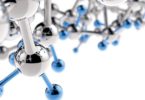Quiz on Concept of Chemical Periodicity (Inorganic Chemistry):
The correct order of second ionization potential of carbon, nitrogen, oxygen and fluorine is
(a) C > N > O > F
(b) O > N > F > C
(c) O > F > N > C
(d) F > O > N > C
Mendeleef’s periodic law is based on
(a) Atomic weight
(b) Atomic number
(c) Number of neutrons
Coinage metals are present in
(a) s-block
(b) d-block
(c) p-block
(d) f-block
‘Au’ is the symbol for the element :
(a) Arsenic
(b) Gold
(c) Aluminium
(d) Silver
The metal-having highest melting point is
(a) Chromium
(b) Tungston
(c) Diamond
(d) Silver
With respect to chlorine, hydrogen will be
(a) Electropositive
(b) Electronegative
(c) Neutral
Related: isomerism questions and answers
Which of the following elements are analogous to the lanthanides?
(a) Actinides
(b) Borides
(c) Carbides
(d) Hydrides
Going from fluorine to chlorine, bromine and iodine, the electronegativity
(a) Increases
(b) Decreases
(c) First decreases then increases
(d) Changes randomly
Beryllium and aluminium exhibit many properties which are similar. But, the two elements differ in
(a) Forming covalent halides
(b) Forming polymeric hydrides
(c) Exhibiting maximum covalency in compounds
(d) Exhibiting amphoteric nature in their oxides
Symbol ‘Sb’ stands for the element :
(a) Strontium
(b) Silicon
(c) Antimony
(d) Selenium
Which of the order for ionisation energy is correct?
(a) Be > B > C > N > O
(b) B < Be < C < O < N
(c) B < Be < C < N < O
(d) B < Be < N < C < O
Electron affinity is the lowest for
(a) Nitrogen
(b) Carbon
(c) Oxygen
(d) Sulphur
Related: Practice Questions on Permutation and Combination (Maths)
Modern periodic table is based on the atomic number of the elements. The experiment which proved the significance of the atomic number was
(a) Millikan’s oil drop experiment
(b) Moseley’s work on X-ray spectra
(c) Bragg’s work on X-ray diffraction
(d) Discovery of X-rays by Rontgen
In comparison with alkali metals, the electron affinity of halogens is
(a) Very high
(b) Very low
(c) Nearly same
(d) Exactly same
Of the following pairs, the one containing example of metalloid elements in the periodic table is
(a) Sodium and potassium
(b) Fluorine and chlorine
(c) Calcium and magnesium
(d) Boron and silicon
The Latin names for the elements Antimony, Potassium and Sodium are :
(a) Stibium, Kalium and Argentum
(b) Kalium, Stibium and Natrium
(c) Stibium, Stannum and Natrium
(d) None
The most basic element is
(a) Fluorine
(b) Iodine
(c) Chlorine
(d) Bromine
Which element has maximum electron affinity
(a) Na
(b) S
(c) Mg
(d) Al
Related: organic nomenclature practice problems with answers
The long form of periodic table is based on
(a) Shape of the atom
(b) Mass of the atom
(c) Atomic number of the atom
(d) Electronegativity
Which one of the elements is most metallic?
(a) P
(b) As
(c) Sb
(d) Bi
The symbols for the elements selenium and silicon are :
(a) Si and Se
(b) S and Si
(c) Se and Si
(d) S and Sl
Which is correct about ionisation potential
(a) It is independent of atomic radii
(b) It increases with increase in atomic radii
(c) It remains constant with increase in atomic radii
(d) It decreases with increase in atomic radii
Mosley’s name is most closely associated with the discovery of
(a) Positron
(b) Deutrons
(c) Atomic number
(d) Atomic weight
For a p – block element, its 3d, 3s, 3p and 4s orbitals are completely filled and the differentiating electron goes to the 4p orbital. The element should have its atomic number in the range
(a) 13 – 18
(b) 21 – 26
(c) 31 – 36
(d) 49 – 54
Related: work energy and power practice problems
Which has the highest second ionisation potential
(a) Nitrogen
(b) Carbon
(c) Oxygen
(d) Fluorine
The elements in which s and p-orbitals are present
(a) Common elements
(b) Inert gases
(c) Halogens
(d) Transitional elements
On moving down the group gradually increase
(a) Oxidising property
(b) Electronegativity
(c) Acidic property
(d) Metallic property
The symbol for the element Astatine is :
(a) As
(b) At
(c) Ai
(d) An
In view of their low ionisation energies the alkali metals are
(a) Weak oxidising agents
(b) Strong reducing agents
(c) Strong oxidising agents
(d) Weak reducing agents
In a period, elements are arranged in strict sequence of
(a) Decreasing charges in the nucleus
(b) Increasing charges in the nucleus
(c) Constant charges in the nucleus
(d) Equal charges in the nucleus
Related: Chemical Analysis Quiz
The second ionization potential is
(a) Less than the first ionization potential
(b) Equal to the first ionization potential
(c) Greater than the first ionization potential
Some of the polar crystal when heated produce electric current. This phenomena is termed as
(a) Ferroelectric effect
(b) Phyroelectric effect
(c) Antiferroelectric effect
(d) Piezoelectric effect
Ionization potential is lowest for
(a) Halogens
(b) Inert gases
(c) Alkaline earth metals
(d) Alkali metals
Metallic nature and basic nature of the oxides …. as we move along a period
(a) Increases
(b) Decreases
(c) First increases then decreases
(d) Remains constant
Ionic radii are
(a) Directly proportional to effective nuclear charge
(b) Directly proportional to square of effective nuclear charge
(c) Inversely proportional to effective nuclear charge
(d) Inversely proportional to square of effective nuclear charge.
Related: Questions on Purification of Organic Compounds
Which of the following pairs has elements containing same number of electrons in the outermost orbit?
(a) N – O
(b) Na – Cl
(c) Ca – Cl
(d) Cl – Br
Radius of the isoelectronic species
(a) Increases with the increase of nuclear charge
(b) Decreases with the increase of nuclear charge
(c) Is the same for all
(d) First increases and then decreases
The tenth elements in the periodic table resembles with the
(a) First period
(b) Second period
(c) Fourth group
(d) Ninth group
When a neutral atom is converted into cation, there is
(a) Decrease in the atomic number
(b) An increase in the atomic number
(c) A decrease in size
(d) An increase in size
All element in 3rd period have
(a) An atomic number 3
(b) 3 complete sub-shells
(c) Valence electrons shell
(d) 3 electrons less than the octet
Related: Calorimetry quiz
Smallest among these species is
(a) Lithium ion
(b) Hydrogen
(c) Lithium
(d) Helium







Mai bhi student hoo